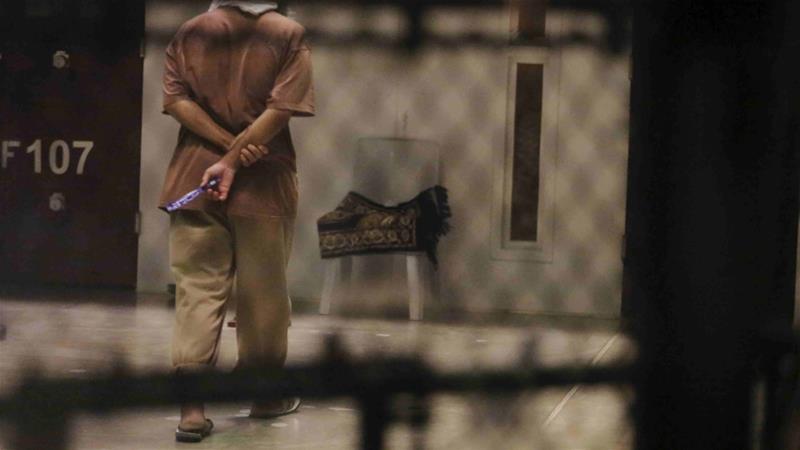Guantanamo prison survivor Sami al-Hajj shares his story
Al Jazeera journalist faced torture and interrogations while being held without any charges at the US-run prison camp.
For over six years Sami al-Hajj did not have a name; he was simply known as prisoner number 345.
The only journalist to be detained at Guantanamo Bay, Cuba, he endured torture and interrogations without having any charges filed against him, like so many others.
He was working as a cameraman for Al Jazeera, covering the US war against the Taliban, when he was arrested on false charges by Pakistani authorities in 2001.
He was held a prisoner by US forces in Afghanistan and Pakistan for five months before being taken to Guantanamo Bay as an “enemy combatant”.
The US accused him of working for Al Jazeera to facilitate “terrorist acts” based on unfounded accusations.
It was not until after spending six years and a half in the prison camp and going on hunger strike for 480 days that he was finally released in May 2008 as a free and innocent man.
Every one of the 800 prisoners held at Guantanamo Bay has a powerful story to share and al-Hajj’s memoirs, Prisoner 345 – My Six Years in Guantanamo, is just one of them.
The book offers glimpses of the “depths of depravity and humiliation” that the prison inmates endured over the years.
Al-Hajj recalls the authorities stripping him bare and throwing him into a freezing cell in solitary confinement, with the airconditioning turned on maximum.
The guards terrorised the prisoners around the clock, he says.
Seven soldiers dressed in riot gear would storm their cells without any reason, beating them mercilessly, “almost happily”, al-Hajj wrote.
The painful force-feeding that he endured for over a year often left him covered in vomit.
However, it was the doctors who were the “principal architects” of the physical and mental torture they endured, doctors who “relished coming up with new ways to inflict pain”.
“They actually told us: ‘We will torture you until death. But we won’t let you die. You will live in the space between life and death'” al-Hajj says in the book.
‘Not made for defeat’
Most harmful of all was the sense of isolation that ate away at the prisoners, al-Hajj recalls.
Many prisoners lost their minds in order to disassociate and escape the unbearable torture, but al-Hajj remained firm in his resolve to leave the camp with his mind intact.
His story is not one of defeat.
“Man is not made for defeat. A man can be destroyed, but not defeated,” al-Hajj quotes Ernest Hemingway in his memoirs.
“I defeated them. I defeated them with my resolve, taken from Allah Himself, who is with us wherever we are, in the darkest of nights and longest of days.”
It was his faith in Allah that gave him the strength to endure the pain, al-Hajj says.
During his most trying moments, he would remind himself of examples set by the heroes of Islam.
“I set my mind to remembering Bilal (one of the Islamic Prophet Muhammad’s companions) and those men of history, which infused my spirit with tremendous energy. I felt an ease in my limbs, giving me – as God is my witness – a sense of warmth flowing into every cell in my body,” al-Hajj writes, recalling times when the room’s temperature was below freezing.
“I am not exaggerating when I say that, by the grace of Allah, the cell was sometimes filled with warmth for 10 or 15 minutes.”
It was this strength held by the Muslim prisoners that left a strong impression on a female US soldier who guarded them at Guantanamo.
As noted in his memoir, the guard reached out to al-Hajj some years ago with the message: “You can inform the brothers that their strength has inspired me to accept Islam. May Allah protect you and guide you along the righteous path.”
Al-Hajj’s memoir is an act of generosity as he shares his pain with his readers. It’s a story of survival, told in his own words.
“If I could say only one thing,” al-Hajj says, “it would be what British historian Arnold Toynbee said, that a human being is a being you cannot conquer.
“But I would add that whoever’s heart is filled with faith will be able to bear whatever is thrown at him.”
Inside Story
What’s next for Guantanamo?
Source: Read Full Article




